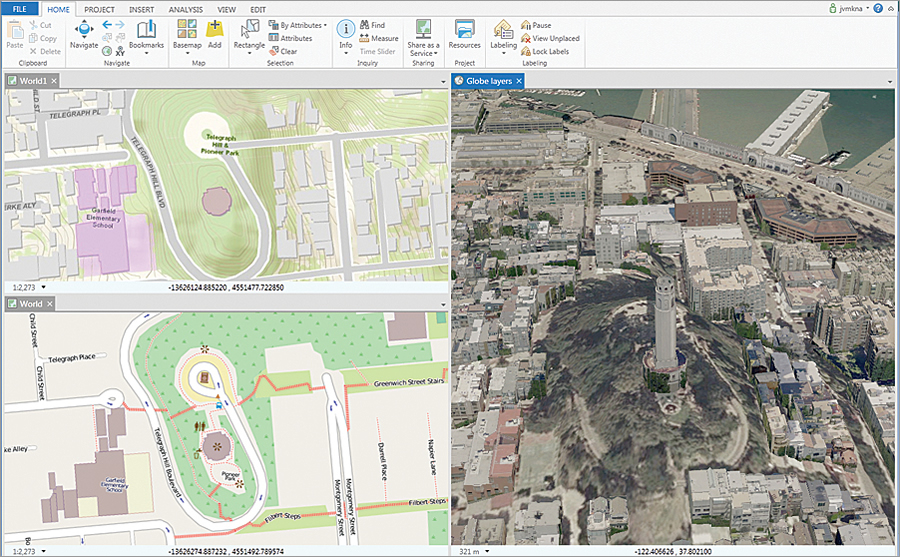

- #Make polygon multipatch arcpro how to#
- #Make polygon multipatch arcpro archive#
- #Make polygon multipatch arcpro pro#
- #Make polygon multipatch arcpro code#
See Migrate from ArcMap to ArcGIS Pro for more information. There are no plans to release an ArcGIS Desktop 10.9, and it is recommended that you migrate to ArcGIS Pro.
#Make polygon multipatch arcpro archive#
In ArcGIS and ArcGIS Pro, the Intersect Tool is part of the Analysis. Construct polygons from featuresArcGIS Pro Documentation Construct polygons from features ArcGIS Pro 3. Other versions Help archive ArcGIS 10.8.2 is the current release of ArcGIS Desktop and will enter Mature Support in March 2024. This example is also published as a YouTube video here. Intersection is used to get the intersection of a given polygon and the given. It is usually a good idea to create a backup of the master layer before performing this type of operation. To cut a hole in a polygon feature using the Split tool, select the feature, sketch the hole inside the polygon boundary and click Finish. The following steps a the ones I use to have the most consistent results.Ĭaution must be used when doing this type of operation as you will likely be working with a large and valuable dataset that has had a lot of time invested into ensuring its quality and integrity. This is a pretty common and simple workflow for most GIS software, however, I have found it to be more complicated and inconsistent with ArcGIS Pro than any other software. It is advantageous to have one database with similar features that have a unique field value that a definition query can be applied to instead of having many layers or shapefiles that have to be managed. Create lines from points using the Points To Line (Data Management) tool in ArcGIS Pro.
#Make polygon multipatch arcpro how to#
now the only supported type of features for multipatch layers are polygons. The steps below describe how to create polygons from points. The workflow usually consists of receiving a shapefile and then adding that shapefile to a larger database of the same type of feature (i.e. Having an extruded building, does not make your features with 3D geometry. Additionally, I have to say that I'm using ArcGIS pro 2.3 and can only hope that it works in other versions as well.A common operation in GIS is to add data to a master database. The Insert tool will appear in the Construction Tools window. Click the multipatch feature in the Create Features window.

Click the Edit Placement tool on the 3D Editor toolbar. Begin a 3D edit session by clicking the 3D Editor drop-down and click Start Editing. Unfortunately, since there is no arcpy documentation for multipatch objects I don't know if it always works but it did in the cases I was testing. Add an empty or populated multipatch feature class into ArcScene or ArcGlobe. Ic = arcpy.da.InsertCursor(out_name, + fields) To start a multipatch or 3D object feature, draw a closed polygon profile with the pointer and drag the 3D handle to extrude it. This will create a shapefile with polygon features. Then on the Options tab select the 'Treat closed polylines as polygons' check box. # Create the output feature class (fields copied from the multipatch_layer)Īrcpy.CreateFeatureclass_management(out_path, out_name, 'POLYGON', multipatch_layer) Are the polylines in AutoCAD closed and are you using the MAPEXPORT command If so, on the MAPEXPORT window, under the Selection tab select Polygon and select objects. Poly = row.difference(arcpy.Polygon(arcpy.Array(None)))

# Option 2: Take the difference of multipatch with empty polygon -> converts it to polygon Poly = row.union(arcpy.Polygon(arcpy.Array(None))) # Option 1: Union the multipatch with an empty polygon -> converts it to polygon Hey everyone, As suggested by William Morrish you can use the import 3D tool that will import the 3D multipatch object but you have to be very careful with units and coordinates with the same. # If all elements are vertical, arcpy somehow returns the bounding box -> don't add these elements conversion to polygon yieds a partCount > 0) # At least one element has to be non-vertical for the results to be correct (i.e. # (except FID and Shape )įields = įor row in arcpy.da.SearchCursor(multipatch_layer, + fields): # Select all fields to be present in the output layer as well # Initialize the variables (choose your folder and names) Move a vertex To move a vertex, double-click the vertex and drag a 3D axis handle.
#Make polygon multipatch arcpro code#
For those who don't have 3D Analyst, here is the python code I'm using as a workaround. Geometry objects can be created from scratch using Geometry, Multipoint, PointGeometry, Polygon, or Polyline classes. To create multipatch or 3D object features, use the Create 3D Geometry tool.


 0 kommentar(er)
0 kommentar(er)
